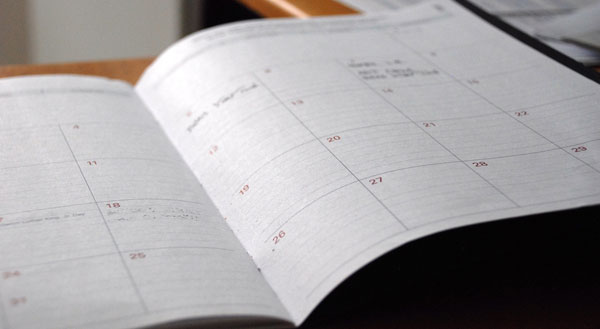12 Critical Steps to Writing a Nonfiction Book

The number of steps to writing a book varies greatly with each genre.
Writing steps for fiction books, for example, need to aid the writer in the development of the central story and the characters in it. This process tends to be more art than science.
Most nonfiction books, on the other hand, require steps that allow the writer to create an intimate connection with readers in order to deliver a solution to a problem.
Luckily for writers, the process for nonfiction books tends to be more science than art, which is much easier to encode into a specific set of steps.
The 12-Step Writing Process for Nonfiction Authors
For this article, I’ll assume that you operate a business or run a professional practice to help clients solve specific problems, and that you’re writing your book to become recognized as an expert and then leverage this status to grow your business.
Now, it’s important to understand that the book project you’re embarking on isn’t and shouldn’t be about you or your business (although it’ll clearly help both). Your nonfiction book must always begin and end with your target audience in mind.
For example, your book title and cover design must reflect the aspirations of your readers to overcome the specific problem that your book addresses, and the body of your book must deliver the precise solution that’ll relieve them from that problem.
With this in mind, let’s begin with the first step to writing a nonfiction book that can find success in the marketplace.
Step 1: Get to Know Your Audience Intimately
For nonfiction books to work, they must achieve two things:
- They must establish a deep connection with their target audience
- They must be addressed to an audience of one
I’ll explain both points below.
Problem-solving nonfiction books are by nature very personal, because people’s problems are personal. Before you can truly help readers, you’ll need to learn about their hopes, dreams, challenges and fears.
You’ll need to learn how they feel about their problem and how it affects them. The more you understand your audience’s psyche, the closer you’ll be able to bond with them.
Also, when dealing with subjects of a personal nature, you need to address each reader individually. In other words, you need to target your book to an audience of one.
How do you do this? You begin by looking into your current and past clients and then expanding your research online until you have enough information to develop an “avatar” of your ideal reader.
This avatar is a written profile that acts as a composite of all the demographic and psychographic characteristics of your target audience rolled into a single audience member (or two if your book caters to both genders).
This composite of an ideal client will become your audience of one. So when you write your nonfiction book, you’ll address it to your avatar.
What kind of information should be contained in this profile? Here’s a comprehensive list:
- First you need to make up a first name
- Then find a headshot with the appropriate age and gender from a free stock photo site and paste to your avatar profile (a Word document or equivalent will do)
- Add the avatar’s age and marital status
- Add their profession and income level (annual family income)
- Include their number of children if any, their status and their living arrangements (single, married, working, studying, living at home, living away)
- Is your avatar a homeowner? What’s the value of the home?
- Any pets? Hobbies?
- Any health or other issues?
- Finally, list their hopes, dreams, fears and challenges
Step 2: Identify the Problem You Want to Solve for Them

Now it’s time to identify the specific problem that you’re setting out to solve for your target audience. This has to be a problem that registers at a high personal level of pain and, naturally, a problem that you’re fully qualified to solve.
In fact, this problem should really jump out of your avatar research; a painful issue that’s shared by all members of your target audience.
For example, it could be related to health, their lifestyle, money, debt, psychology, employment, and countless other personal issues.
Or, in the case of a business, it could be related to retention issues, diversity issues, time management issues, efficiency issues, and so on.
Step 3: Identify Your Unique Solution
This will be the main idea of your book, the solution that you propose including strategies and tactics that address your audience’s problem head on.
Now, the word “unique” doesn’t imply that you must have discovered some miracle breakthrough the likes of which have never been seen before. It could mean creating a new combination of strategies out of existing ones.
In other words, an invention developed by interconnecting a group of known inventions in a new way is still an invention.
What’s important is that you had success implementing your new approach and you also have the social proof that’s necessary to prove to your audience that your solution produces the results they’re seeking.
The more evidence you can collect about your results, the more credible they’ll be to your audience. This is where client case studies and testimonials come in handy.
Your own personal story in overcoming the same problem can also make a compelling argument. In short, the more stories you share, the more credible your solution will be in the eyes of your target audience.
The more they can relate to them, the more they’ll buy into your solution.
Step 4: Mind Map Your Book

Now that you have a handle on the problem that you’re setting out to solve and your unique solution, it’s time to begin laying down the elements of your book on paper.
Being the subject expert, you’ll find that all this information is already floating in your brain. When you offer your professional services to clients, you can always recall what’s necessary to perform those services with precision.
But when it comes to putting all this information down on paper, you can’t just sit down with a pen and a notebook and expect that words will start to flow out of you effortlessly. That’s not how our brains are wired.
Luckily, there’s a technique called “mind mapping” that does just that. If was popularized by British author Tony Buzan decades ago and it emulates the way our brains store and retrieve information to access the content you need for your book.
Here’s how it works. You begin by writing in the center of a large piece or paper (a whiteboard is ideal) the main idea of your book. Then you draw branches radiating out of the center.
Next, you break down your main idea into its components and write down each one at the end of a branch. Then, you break down each component into sub-components and expand radially out of the main component using sub-branches.
You’ll repeat this process as many times as necessary until you feel you’ve captured all the required topics for your book.
Mind maps work so well because they access information in a “brain-friendly” fashion and then organize it in a way that’s conducive to creating a thorough outline for your nonfiction book.
Step 5: Create Your Book Outline
Turning your mind map into your book outline now becomes a natural process. At its core, a book outline is a numbered list.
To create it, start a new Word file or equivalent, and then type the categories from your mind map’s main branches on the first level of the list (e.g. 1, 2, 3, etc.). Then, tab to the next level for each category and begin listing its sub-categories (1a, 1b, 1c, 2a, 2b, 2c, etc.).
Continue this process until you exhaust all branches in your mind map.
When you’re done, clean up your sub-categories if necessary. For example if a main category has 20 sub-categories, you may want to combine some of them to create a more manageable number.
Once you have a de-cluttered outline, think about what the best roadmap for your audience would be. Perhaps you’ll need to reorder some of the main categories until you achieve a flow of ideas that makes the best sense.
Step 6: Create Your Chapter Prompts

Each outline topic, sub-topic, etc. will identify a specific chapter or sub-chapter in your book and it’ll also act as the trigger or writing prompt for that section.
Since the content related to each book section is already stored in your brain, you’ll find that all you need to begin writing is a short phrase to “prompt” you brain into a state of recall.
So, use each outline topic and sub-topic as a seed to write the beginning of each section – just a short sentence will do. These initial sentences are going to be your chapter prompts that will be instrumental for downloading your book content from your brain onto the written page.
When you’re done creating a prompt for each section and sub-section, not only will you be ready to begin the writing process, but you’ll also discover that you’ll never experience “writer’s block.” The prompts will make your ideas begin to flow like a torrent.
Step 7: Set a Publishing Deadline
Now it’s time to get dead serious about your book project. By that I mean it’s time to set a hard deadline for publication so that you can beat that dreaded statistic that everybody talks about: “97% of new authors never finish or publish their books.”
The only way to be excluded from this statistic is to create an immovable deadline to motivate you to publish your book.
For example, this could be achieved by booking yourself into a public speaking engagement with your professional association a year from now in order to officially launch your book.
Here are some other ideas:
- Have your book ready to launch at a seasonal industry event
- Introduce your book on a panel or a workshop at a trade show
- Present your book at a conference you’ll be attending
- Present it at an annual professional gathering
- Launch your book at a festival
- Schedule a course or seminar based on your book’s content for prospects, clients or colleagues
Step 8: Create a Publishing Plan
With your book outline ready and a deadline set in stone, work backwards from your publication date to create a publishing plan that brings you back into the present.
In this plan, you’ll need to incorporate all of the different facets in the book publishing process, including:
- Writing your manuscript
- Doing multiple revisions
- Having your manuscript professionally edited
- Having your book layout and cover professionally designed
- Publishing and printing your book
- Creating and implementing your book marketing and promotion plan
- Creating a book launch plan
Step 9: Set a Writing Schedule

In order to make sure you actually find the time to write your book in spite of your daily pressures, you’ll have to set aside a well-guarded block of time on a daily basis (or at the very least six days a week).
Your goal is to set up a 2-hour book-writing window at the same time every day and away from all your other responsibilities. Some people prefer to write early in the morning when everyone is sleeping in the house, or late in the evening.
Although lunchtime is a possibility, it’s quite challenging to set aside a chunk of time in the middle of the day without expecting distractions. You don’t want to sit down to write when you should be attending to your business.
The book writing creative process can’t be multi-tasked. It requires consistency, linearity and above all peace and quiet.
Make sure you tell those around you that you’re not to be disturbed during your writing time, short of an emergency that only you are equipped to take care of.
When you write, put all your electronic devices on mute to prevent being disturbed by notifications.
Also, avoid going down the rabbit hole of the Internet during your writing blocks or the time will disappear before you even notice it. If you want to look something up to incorporate into your writing, then add it to a to-do list for later.
Here’s another important piece of advice: don’t write for more than two hours at a time. If you feel like you’re on a roll and you write for five hours, you’ll end up creatively spent and you’ll pay the price the next day.
If your ideas keep flowing after your writing block has ended, then make notes and go back to them the next day.
Finally, keep in mind that nonfiction books don’t need to be written in sequence. Just choose any random section on your outline that inspires you that day and work on it independent of the others.
Eventually, when everything comes together at the end you’ll have plenty of time to work on chapter transitions and other matters of content flow.
Step 10: Establish a Daily Word Count
If you’re a first-time writer and follow the above steps, armed with a solid book outline and good prompts, you’ll be able to write between 400 and 500 words per hour.
Now, keep in mind that this throughput can only be achieved without disruptions to your flow, which is why it’s so important to mute all devices, including your laptop. When you get into the “flow” of writing you’ll notice that two hours will fly by.
At this rate, and writing a minimum of 6 days a week, you’ll be able to generate a 50,000-word manuscript (approximately a 200-page book) in about 50-60 days, or approximately 10 weeks.
Now, this is just the initial draft. Then the real work of rewrites and self-editing begins, which can easily double this time. Expect that it’ll take you between 5-6 months before you’re ready to hand out your manuscript to an editor.
Step 11: Tell Everyone You’re Writing a Book!

To ensure that you can sustain your motivation throughout your writing project, tell everyone you care about that you’re writing a book with the view to launch it at the “xyz” event on such and such a date.
Tell all your relatives, friends and business associates about it. You’ll never want to let them (or yourself) down and that feeling will carry you through the entire project.
Step 12: Assemble an Advance Reading Group
This step is key for your success. Before you start writing your book, assemble an advance reading group made out of people you know who are already members of your target audience.
These people could be present or past clients, friends of friends, friends or family and other acquaintances. The more arms-length the relationship the better.
Then, as soon as you finish each chapter, email them a pdf file with it so that they can read it and give you feedback. This is very valuable information that you’ll be using in your rewrites to make sure that your book resonates with readers at all times.
There’s nothing worse than writing an entire manuscript only to find out at the end that it missed the mark with your target audience. Remember, you’re writing your book for them, not for you.
What to Do After You Finished Your Manuscript
Great, now your manuscript is finally done! What comes next? The Following 7 steps:
Next Step #1: Hire a Professional Editor
Your book will cement your status as an expert in your field and experts are expected to have excellence in everything they do, including book editing.
Since your book will be a reflection of your professional reputation, it must be edited by an expert – this is not an option.
Also, this isn’t an area where you can afford to cut corners by editing your book yourself or by hiring a relative or a friend. For your book to succeed in the marketplace you’ll need to budget for a professional nonfiction editor.
Next Step #2: Hire a Book Layout Designer
By extension, you’ll also have to budget for a nonfiction book layout artist.
The nonfiction book trade has a high bar for production quality, hence the need to hire a book design professional with experience in the genre.
Also, when your book goes on sale, you’ll find yourself competing head-to-head with traditionally published nonfiction books in your niche. Those books will be professionally laid out, therefore so must yours.
Next Step #3: Hire a Cover Designer
When your book appears side by side with traditionally published titles on an Amazon search, it’ll be apparent very quickly if your book cover hasn’t been professionally designed because your book will look amateurish.
You’ll need to budget for a professional book cover designer because, fair or not, if your cover looks sub-standard, readers will assume that your book content will be sub-standard as well.
Next Step #4: Create an Account on Amazon’s Kindle Direct Publishing (KDP)
Once your professionally produced print-ready files are completed, it’s time to set up a self-publishing account on Amazon’s KDP so that your book can be listed for sale on Amazon.
To help you with the account setup, I’ve written a companion article that shows you all the necessary steps: “How to Self Publish Nonfiction with Kindle Direct Publishing.”
Next Step #5: Create an Account on IngramSpark
Another book distributor that you’ll need to set up an account with is IngramSpark. They’re the self-publishing subsidiary of Ingram, the largest book distributor in the world for brick-and-mortar bookstores and libraries.
For more details, read my companion article: “7 Time-Saving Steps to Publish a Book For Your Business.”
Next Step #6: Hire a Book Marketing Professional
Setting up books on Amazon correctly requires specialized marketing knowledge.
You’ll have to choose the right keywords to rank high on user searches, you’ll need a compelling book description that closes sales and you’ll have to be very strategic on how you choose book categories and subcategories in order to qualify for one of the highly coveted Amazon bestseller lists.
If you do all of the above work on your own, you’ll risk being out-competed by authors who hire book-marketing professionals to stack the deck in their favor.
Making this investment now will pay off later in hard book sales. Here’s an article I recommend you read: “How to Find the Best Book Marketing Services for Nonfiction.”
Next Step #7: Assemble a Book Review Team
Aside from choosing the best keywords for user searches, creating a compelling book description and placing your book in the right categories and subcategories, a key signal used by Amazon’s product-ranking algorithm is the number and quality of user book reviews.
To this end, you’ll need to assemble an advance book review team to strategically leave book reviews on Amazon in order to boost your ranking and, by extension, your book sales.
To learn how put together this important team while complying with Amazon’s strict book review rules, read this article: “How to Get Reviews on Amazon for Your Nonfiction Book.”
Next Steps
Self-publishing has many moving pieces and this article gives you a rundown of all the steps that you’ll need to follow to first produce a manuscript and then turn it into a high-quality nonfiction book that can compete in the marketplace.
Now it’s time to take the first step and get going on this exciting journey. Remember, you’ll end up with a legacy that you’ll be very proud of while you make an investment that’ll pay reputational and financial dividends for years to come.
Best of luck!
If you enjoyed this article and are in the process of writing a nonfiction book, be sure to check out my free nonfiction success guide, drawn from years of experience editing books for bestselling authors (including a New York Times bestseller) and ghostwriting for CEOs and politicians. Simply click here to get instant access.
Ben
Leave me a comment below if you have any questions or a specific need that I can help you address – I operate an author services firm that specializes in helping entrepreneurs, professionals and business owners who want to publish books as a calling card for prospects, to establish their status as an expert or to just to generate additional leads for their businesses.
Here are some related posts I highly recommend:
How to Write a Compelling Book in 12 Steps: A Must-Read Guide for Nonfiction Authors
How Long Does it Take to Write a Book to Help Grow Your Business?
The 10 Must-Have Writing Skills for Nonfiction Authors
The 7 Key Rules for Writers of Outstanding Nonfiction Books

Bennett R. Coles is an award-winning author of six books published through Harper Collins (New York) and Titan Publishing Group (London). He is also the publisher at Promontory Press, editor for multiple bestselling authors (including a NY Times bestseller), ghostwriter for CEOs and politicians and the founder of Cascadia Author Services, a boutique full-service firm that specializes in premium author services specifically designed for busy professionals. Our end-to-end services include writer coaching, ghostwriting, editing, proofing, cover design, book layout, eBook production, marketing, printing and distribution.
One response to “12 Critical Steps to Writing a Nonfiction Book”
-

This article contains terrific advice to help me change from an academic approach to nonfiction to a book that any thoughtful reader could enjoy without being a specialist.







Leave a Reply